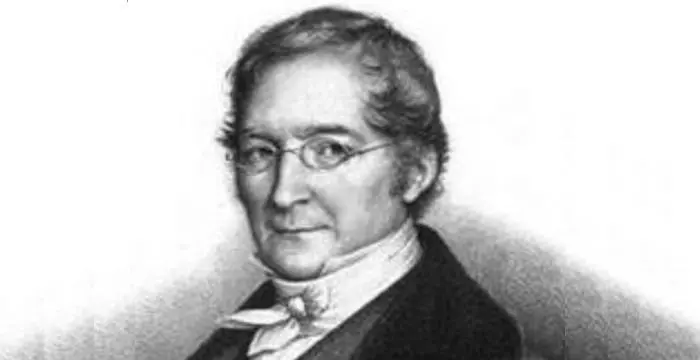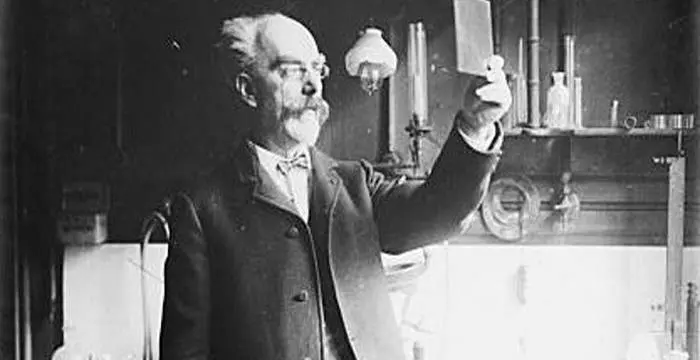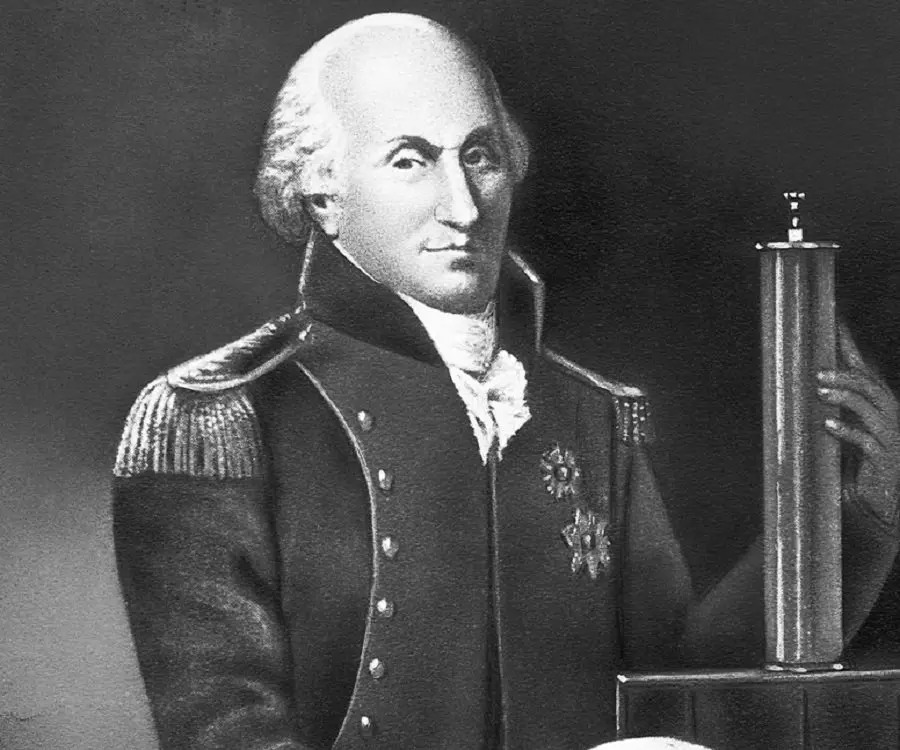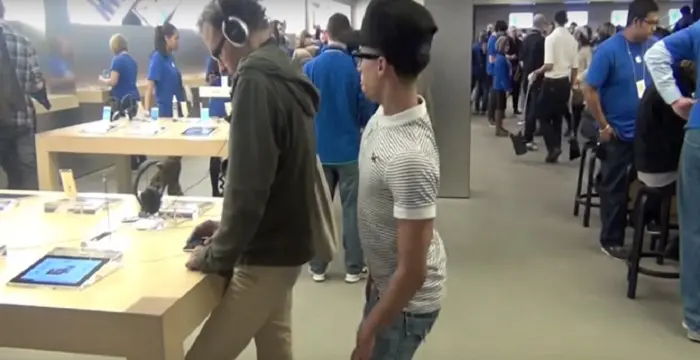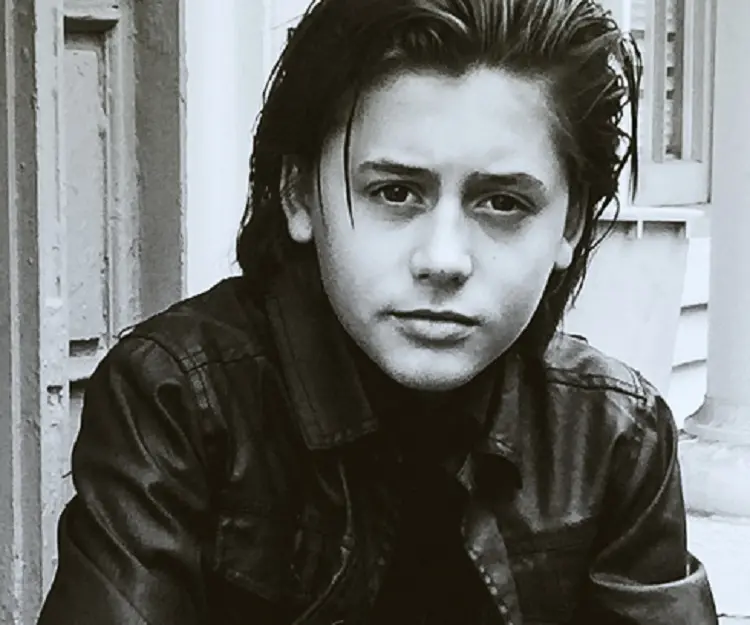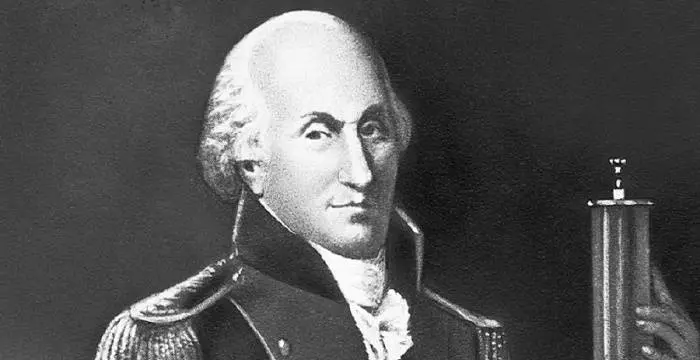
Charles Augustin De Coulomb - Physicists, Facts and Facts
Charles Augustin De Coulomb's Personal Details
Charles Coulomb was the French physicist who developed Coulomb’s law
| Information | Detail |
|---|---|
| Birthday | June 14, 1736 |
| Died on | August 23, 1806 |
| Nationality | French |
| Famous | Scientists, Physicists, Physicists |
| Universities |
|
| Discoveries / Inventions |
|
| Birth Place | Angoulême, France |
| Gender | Male |
| Father | Henry Coulomb |
| Mother | Catherine Bajet |
| Sun Sign | Gemini |
| Born in | Angoulême, France |
| Famous as | French physicist |
| Died at Age | 70 |
// Famous Physicists
Walter Kohn
Nobel Laureate Walter Kohn was an Austrian-born American theoretical chemist and physicist. Check out this biography to know about his childhood, life, achievements, works & timeline.
Amedeo Avogadro
Amedeo Avogadro was an Italian scientist who formulated what is now known as Avogadro's law. This biography of Amedeo Avogadro provides detailed information about his childhood, life, achievements, works & timeline.
Gabriel Lippmann
Gabriel Lippmann was a French physicist and inventor. He was awarded the Nobel Prize in Physics in 1908. This biography of Lippmann provides detailed information about his childhood, life, research, achievements and timeline.
Charles Augustin De Coulomb's photo
Who is Charles Augustin De Coulomb?
Charles Augustin de Coulomb was a French physicist best known for developing the law of physics which is named after him. Coulomb’s law, also known as Coulomb’s inverse-square law, describes the electrostatic interactions between electrically charged particles. It was his discoveries and studies during the late 18th century that formed the foundation for the development of the theory of electromagnetism later on. He made equally important contributions in the field of friction studies, torsions, applied mechanics, and magnetism. Born into a wealthy family, he received a good education and was a very studious and bright student. He graduated from the Royal Engineering School of Mézières (École royale du génie de Mézières) and held a number of engineering jobs over the course of his professional life. He was also interested in research and began to write papers on applied mechanics. Alongside his engineering career, he continued his own work on friction and magnetism. Once he was asked to report on the feasibility of a navigable canal. Through his research he concluded that the proposed plan was too expensive—this angered the French bureaucracy and he was penalized. Knowing that he was right, he felt disappointed with the French government and decided to invest his efforts in the study of physics instead.
// Famous Scientists
Juliane Koepcke
Juliane Koepcke is a German-Peruvian biologist, who was the lone survivor among the 92 passengers and crew of the ill-fated LANSA Flight 508 that crashed in the Peruvian rainforest on 24 December 1971. Know more about her life in this biography.
Henry Cavendish
Henry Cavendish was a theoretical chemist and physicist, renowned for discovery of hydrogen and calculation of the mass of earth. To know more about his childhood, profile, timeline and career read on
Konstantin Tsiolkovsky
Konstantin Tsiolkovsky was a Russian rocket scientist and a pioneer of astronautics. This biography provides detailed information about his childhood, family, personal life, career, achievements, etc.
Childhood & Early Life
Charles Coulomb was born on 14 June 1736, in Angouleme, France, to aristocratic parents. His father, Henri Coulomb worked as a lawyer, while his mother Catherine Bajet hailed from a well-established family.
He received good education from the Collège Mazarin and the college de France where he attended lectures in the subjects of philosophy, language, literature, mathematics, chemistry, astronomy, etc.
In 1758, he went to Paris to study to acquire admission into the prestigious the École du Genie at Mézières. He was able to pass the entrance exam after some months to secure admission into the college.
He graduated with the rank of lieutenant en premier in the Corps du Génie in 1761.
Career
Coulomb began his career as an engineer with the post of ‘Lieutenant’ in the Corps du Génie. During this time he worked in the fields of structural design, soil mechanics and so on.
He was posted to Brest at first. But later on, in February 1764 he was sent to Martinique in the West Indies. There he was made in charge of building the new Fort Bourbon which took him many years to complete.
The total cost of constructing Fort Bourbon was six million livres, a huge amount in those times. Hundreds of laborers were employed at the construction site and Coulomb directed them through the various phases of construction. This work was very hectic and took a toll on Coulomb’s health and he became very ill.
The practical engineering skills that he acquired during his army construction projects proved quite useful in his later theoretical endeavors in mechanics. He returned to France in 1772 and was posted to Bouchain. By now he also got involved in research and had begun to write his own papers.
In 1773, he presented his first work to the Académie des Sciences in Paris. His first work titled, ‘Sur une application des règles, de maximis et minimis à quelque problèmes de statique, relatifs à l'architecture’, was written to determine the influence of friction and cohesion in some statistical problems.
His use of calculus to overcome various discrepancies in engineering issues highly impressed the Académie des Sciences and thus, he was appointed as the Bossut's correspondent on 6 July, 1774.
In 1777, while posted at Cherbourg, he wrote and submitted his most famous memoir on the workings of a magnetic compass for the Grand Prix of the Académie des Sciences. The paper won him a share of the Grand Prix prize money and also featured his earliest work on the torsion balance.
In 1779, he was posted to Rochefort in France to supervise the construction of a fort made entirely of wood. Here he started performing experiments on friction in the shipyards.
Based on these experiments, he wrote the paper, ‘Theorie des Machines Simples ("Theory of Simple Machines"), in 1781, for which he won the Grand Prix of the Académie des Sciences.
In 1781, his life took a turn for the better and he was elected by the Académie des Sciences as the member of its mechanics section. He relocated to Paris and became an engineering consultant and devoted rest of his life to physics.
He published a paper on the elasticity of wires under twisting stress in 1784 which led to the study of torsion balance. This study would eventually be used to determine the density of earth and also for measuring the forces of frictional electricity and magnetism.
Between 1785 and 1791, he wrote seven crucial memoirs that dealt with various aspects of electricity and magnetism.
The French Revolution began in 1789 when Coulomb was deeply involved with his scientific research. Many institutions were reorganized and abolished. Uncomfortable with the situation, Coulomb retired from Corps du Génie in 1791 and in 1793, he moved to his house near Blois, where continued his scientific research.
Académie des Sciences was abolished in 1793 and was replaced by the Institut de France. In December 1795, Coulomb once again returned to Paris, as he was elected as the member of the Institut de France.
He largely remained engrossed in education related service between 1802 and 1806, while he served at the post of inspector general of public instruction.
Major Works
He is best known for developing Coulomb’s law which he first published in 1785. This law which described the electrostatic interaction between electrically charged particles led to the development of the theory of electromagnetism.
Awards & Achievements
His memoir on magnetic compasses earned him a shared first prize in the Paris Académie des Sciences competition in 1777.
In 1781, he won the first prize at the Académie des Sciences for his work, ‘Theorie des Machines Simples ("Theory of Simple Machines")’ and was elected to the Academie as adjoint mécanicien.
Personal Life & Legacy
Charles Coulomb started a relationship with Louise Francoise LeProust Desormeaux with whom he had two sons. He married her in 1802 after the birth of their second son.
He had always been of a delicate health. His later years were marked by ill health and he died on 23 August 1806.
A lunar feature, ‘Crater Coulomb’ is named after him to honor his contributions to the world.
Trivia
His name is included among the 72 names inscribed on the Eiffel Tower.
The SI unit of electric charge, the coulomb, was named after him.
The theory of earth pressure and the generalized wedge theory, related to soil mechanics propounded by him still form the basis of engineering practice.
He is credited with the invention of the torsion balance.
// Famous Physicists
Henry Cavendish
Henry Cavendish was a theoretical chemist and physicist, renowned for discovery of hydrogen and calculation of the mass of earth. To know more about his childhood, profile, timeline and career read on
Walter Kohn
Nobel Laureate Walter Kohn was an Austrian-born American theoretical chemist and physicist. Check out this biography to know about his childhood, life, achievements, works & timeline.
Nikola Tesla
Nikola Tesla was a Serbian-American inventor, best known for his development of alternating current electrical systems. This biography of Nikola Tesla provides detailed information about his childhood, life, achievements, works & timeline.
Charles Augustin De Coulomb biography timelines
- // 14th Jun 1736Charles Coulomb was born on 14 June 1736, in Angouleme, France, to aristocratic parents. His father, Henri Coulomb worked as a lawyer, while his mother Catherine Bajet hailed from a well-established family.
- // 1758In 1758, he went to Paris to study to acquire admission into the prestigious the École du Genie at Mézières. He was able to pass the entrance exam after some months to secure admission into the college.
- // 1761He received good education from the Collège Mazarin and the college de France where he attended lectures in the subjects of philosophy, language, literature, mathematics, chemistry, astronomy, etc.
- // 1761He graduated with the rank of lieutenant en premier in the Corps du Génie in 1761.
- // 1762The total cost of constructing Fort Bourbon was six million livres, a huge amount in those times. Hundreds of laborers were employed at the construction site and Coulomb directed them through the various phases of construction. This work was very hectic and took a toll on Coulomb’s health and he became very ill.
- // 1764He was posted to Brest at first. But later on, in February 1764 he was sent to Martinique in the West Indies. There he was made in charge of building the new Fort Bourbon which took him many years to complete.
- // 1772The practical engineering skills that he acquired during his army construction projects proved quite useful in his later theoretical endeavors in mechanics. He returned to France in 1772 and was posted to Bouchain. By now he also got involved in research and had begun to write his own papers.
- // 1773In 1773, he presented his first work to the Académie des Sciences in Paris. His first work titled, ‘Sur une application des règles, de maximis et minimis à quelque problèmes de statique, relatifs à l'architecture’, was written to determine the influence of friction and cohesion in some statistical problems.
- // 1774His use of calculus to overcome various discrepancies in engineering issues highly impressed the Académie des Sciences and thus, he was appointed as the Bossut's correspondent on 6 July, 1774.
- // 1777In 1777, while posted at Cherbourg, he wrote and submitted his most famous memoir on the workings of a magnetic compass for the Grand Prix of the Académie des Sciences. The paper won him a share of the Grand Prix prize money and also featured his earliest work on the torsion balance.
- // 1777His memoir on magnetic compasses earned him a shared first prize in the Paris Académie des Sciences competition in 1777.
- // 1779In 1779, he was posted to Rochefort in France to supervise the construction of a fort made entirely of wood. Here he started performing experiments on friction in the shipyards.
- // 1781Based on these experiments, he wrote the paper, ‘Theorie des Machines Simples ("Theory of Simple Machines"), in 1781, for which he won the Grand Prix of the Académie des Sciences.
- // 1781In 1781, his life took a turn for the better and he was elected by the Académie des Sciences as the member of its mechanics section. He relocated to Paris and became an engineering consultant and devoted rest of his life to physics.
- // 1781In 1781, he won the first prize at the Académie des Sciences for his work, ‘Theorie des Machines Simples ("Theory of Simple Machines")’ and was elected to the Academie as adjoint mécanicien.
- // 1784He published a paper on the elasticity of wires under twisting stress in 1784 which led to the study of torsion balance. This study would eventually be used to determine the density of earth and also for measuring the forces of frictional electricity and magnetism.
- // 1785 To 1791Between 1785 and 1791, he wrote seven crucial memoirs that dealt with various aspects of electricity and magnetism.
- // 1785He is best known for developing Coulomb’s law which he first published in 1785. This law which described the electrostatic interaction between electrically charged particles led to the development of the theory of electromagnetism.
- // 1789 To 1793The French Revolution began in 1789 when Coulomb was deeply involved with his scientific research. Many institutions were reorganized and abolished. Uncomfortable with the situation, Coulomb retired from Corps du Génie in 1791 and in 1793, he moved to his house near Blois, where continued his scientific research.
- // 1795Académie des Sciences was abolished in 1793 and was replaced by the Institut de France. In December 1795, Coulomb once again returned to Paris, as he was elected as the member of the Institut de France.
- // 1802 To 1806He largely remained engrossed in education related service between 1802 and 1806, while he served at the post of inspector general of public instruction.
- // 1802Charles Coulomb started a relationship with Louise Francoise LeProust Desormeaux with whom he had two sons. He married her in 1802 after the birth of their second son.
- // 23rd Aug 1806He had always been of a delicate health. His later years were marked by ill health and he died on 23 August 1806.
// Famous Gemini Celebrities peoples
Wentworth Miller
Wentworth Miller is an American actor and screenwriter who achieved recognition for his role in the TV series ‘Prison Break’.
Joyce Meyer
Joyce Meyer is a Christian author and speaker. This biography provides detailed information about her childhood, life, achievements, works & timeline
Zoe LaVerne
Zoe LaVerne is an American musical.ly star. Check out this biography to know more about her family, personal life, including her age, birthday, etc.
WolfieRaps
Check out all that you wanted to know about WolfieRaps, the famous YouTube Personality; his birthday, his family and personal life, his girlfriends, fun trivia facts and more.
Adam Saleh
Check out all that you wanted to know about Adam Saleh, the famous YouTube Personality; his birthday, his family and personal life, his girlfriends, fun trivia facts and more.
Isaak Presley
All about American actor and singer Isaak Presley including his age, birthday, family life, girlfriends, net worth, and some fun facts.
Charles Augustin De Coulomb's FAQ
What is Charles Augustin De Coulomb birthday?
Charles Augustin De Coulomb was born at 1736-06-14
When was Charles Augustin De Coulomb died?
Charles Augustin De Coulomb was died at 1806-08-23
Where was Charles Augustin De Coulomb died?
Charles Augustin De Coulomb was died in Paris, France
Which age was Charles Augustin De Coulomb died?
Charles Augustin De Coulomb was died at age 70
Where is Charles Augustin De Coulomb's birth place?
Charles Augustin De Coulomb was born in Angoulême, France
What is Charles Augustin De Coulomb nationalities?
Charles Augustin De Coulomb's nationalities is French
What was Charles Augustin De Coulomb universities?
Charles Augustin De Coulomb studied at Ecole du Génie at Mézières
What is Charles Augustin De Coulomb's inventions/discoveries?
Coulombs Law was invented (or discovered) by Charles Augustin De Coulomb
Who is Charles Augustin De Coulomb's father?
Charles Augustin De Coulomb's father is Henry Coulomb
Who is Charles Augustin De Coulomb's mother?
Charles Augustin De Coulomb's mother is Catherine Bajet
What is Charles Augustin De Coulomb's sun sign?
Charles Augustin De Coulomb is Gemini
How famous is Charles Augustin De Coulomb?
Charles Augustin De Coulomb is famouse as French physicist

